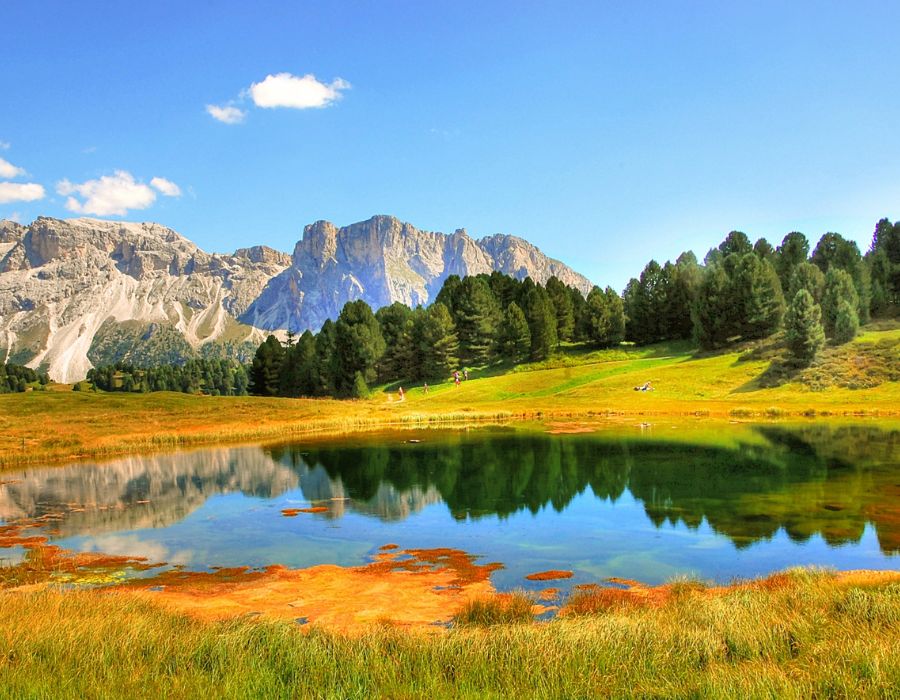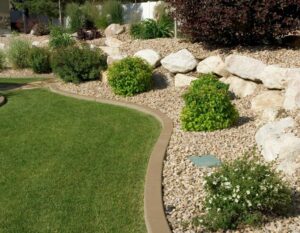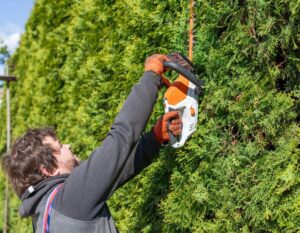Landscaping your outdoor space doesn’t have to break the bank. With some creativity, strategic planning, and cost-effective solutions, you can transform your yard into a beautiful oasis without overspending. Let’s take a look at the essential tips and tricks for landscaping on a budget, helping you achieve an aesthetically pleasing outdoor space while keeping costs low.
Step 1: Set a Budget and Prioritize Your Needs
Before diving into a landscaping project, establish a realistic budget. Identify the most critical aspects of your outdoor space that require attention and prioritize accordingly.
Project Prioritization Tips:
- Assess Your Yard’s Needs: Determine which areas require immediate improvements and which can be addressed later.
- Start with High-Impact, Low-Cost Materials: Simple enhancements like mulching, edging, and planting flowers can drastically improve the look of your yard without requiring a significant investment.
- Plan in Phases: Break your project into manageable phases to spread out costs over time rather than tackling everything at once.
- Make a Wishlist: List all the features you want, then categorize them into “must-have” and “nice-to-have” elements. Focus on essentials first.
- Look for Free Resources: Many cities offer free mulch or compost to residents. Check local community groups for plants or materials others are giving away.
Step 2: Choose Affordable Landscaping Materials
One of the best ways to cut costs is by selecting budget-friendly landscaping materials. There are numerous ways to save money while still achieving a polished and professional look.
Money-Saving Tips on Materials:
- Use Recycled or Reclaimed Materials: Look for second-hand bricks, pavers, and stones at salvage yards or online marketplaces.
- Buy in Bulk: Purchasing mulch, gravel, or soil in bulk often reduces costs compared to buying small bags.
- Opt for Native Plants: Native plants require less water and maintenance, reducing long-term expenses.
- DIY Mulch and Compost: Instead of buying mulch and fertilizers, create your own by composting grass clippings, leaves, and kitchen scraps.
- Repurpose Household Items: Use old tires as planters, wooden pallets for vertical gardens, or repurposed bricks for edging.
- Shop End-of-Season Sales: Nurseries and home improvement stores often discount plants, soil, and landscaping materials at the end of the season.
Step 3: Embrace DIY Landscaping Ideas
DIY landscaping is an excellent way to cut costs while adding a personal touch to your yard. There are countless budget-friendly landscaping ideas that require minimal investment.
Easy DIY Landscaping Ideas:
- Build Your Own Pathways: Use gravel, stepping stones, or repurposed bricks to create attractive walkways.
- Install a Simple Water Feature: A small DIY pond or fountain can add elegance to your yard without a hefty price tag.
- Create Raised Garden Beds: Use recycled wood pallets or inexpensive lumber to build raised garden beds for flowers or vegetables.
- Design a Rock Garden: Low-maintenance and visually appealing, rock gardens require little upkeep and can be constructed using free or inexpensive stones.
- Make a Trellis from PVC Pipes: Instead of expensive store-bought trellises, construct your own for climbing plants like tomatoes or ivy.
- Add Borders with Natural Materials: Logs, stones, and bricks can serve as decorative, low-cost edging for garden beds.
Step 4: Opt for Cost-Effective Landscaping Solutions
To keep expenses low, make cost-effective choices when selecting plants, irrigation methods, and maintenance strategies.
Smart Landscaping Choices:
- Perennials Over Annuals: Perennials bloom year after year, eliminating the need for constant replanting.
- Drought-Tolerant Plants: Reduce water usage by incorporating succulents and drought-resistant plants into your landscape.
- Drip Irrigation Systems: Install a drip irrigation system to deliver water directly to plant roots, minimizing waste.
- Use Ground Cover Plants: Instead of expensive sod, opt for ground covers like clover, creeping thyme, or moss.
- Mulch to Reduce Water Loss: Applying mulch helps retain moisture and reduces the need for frequent watering.
- Plant in Groups: Grouping plants with similar water needs together reduces overall water usage.
- Repurpose Grass Clippings: Use them as a natural fertilizer instead of buying expensive store-bought products.
Step 5: Add Value-Boosting Yard Upgrades on a Budget
Even with limited funds, you can make upgrades that enhance the overall value and appeal of your outdoor space.
Budget-Friendly Upgrades:
- Outdoor Lighting: Use solar-powered lights to illuminate walkways and garden beds.
- Upcycle Furniture: Repurpose old furniture into outdoor seating or plant stands.
- DIY Fire Pit: Construct a simple fire pit using stacked stones for an inviting backyard gathering spot.
- Vertical Gardens: Utilize hanging planters and trellises to maximize greenery without taking up too much space.
- Paint or Stain Fencing: A fresh coat of paint can instantly refresh the look of a tired, weathered fence.
- Hang Bird Feeders and Birdhouses: Attracting birds adds charm and natural beauty to your garden.
- Create an Outdoor Seating Area: Use pallets or repurposed wood to make budget-friendly benches or tables.
FAQs
What are the best ways to save money on landscaping materials?
To save money on landscaping materials, look for recycled or reclaimed materials, buy in bulk, and opt for cost-effective alternatives such as DIY mulch and compost. Consider checking local landscaping supply stores, salvage yards, and online marketplaces for discounted or free materials.
Can I handle a landscaping project on my own, or should I hire a professional?
Many landscaping projects can be handled as DIY tasks, especially if they involve simple upgrades like planting, mulching, or creating pathways. However, for complex tasks such as irrigation installation or large-scale hardscaping, hiring a professional may be a worthwhile investment.
How do I prioritize my landscaping tasks to fit my budget?
Start by assessing your yard’s most pressing needs and prioritize projects that offer the most visual impact for the least cost. Breaking your project into phases and tackling high-impact, low-cost changes first can help manage expenses efficiently.
Which plants offer the most visual impact for the least cost?
Some of the best budget-friendly plants include perennials like lavender, daylilies, and coneflowers. Drought-tolerant plants such as succulents and ornamental grasses also provide great visual appeal while requiring minimal maintenance.
How can I maintain my landscaped yard on a budget?
- Water wisely: Water your plants early in the morning or late in the evening to minimize evaporation.
- Use homemade fertilizers: Compost and natural fertilizers reduce the need for store-bought products.
- Prune regularly: Keeping plants well-trimmed prevents overgrowth and reduces the need for replacement plants.
- Weed naturally: Instead of using costly chemical herbicides, use vinegar or boiling water to kill weeds.
- Aerate your soil: Aerating your lawn improves nutrient absorption and keeps grass healthy without expensive treatments.
Conclusion
Landscaping on a budget is entirely achievable with the right planning, materials, and creative design ideas. By prioritizing projects, sourcing affordable materials, and incorporating DIY landscaping ideas, you can create a stunning outdoor space without overspending. With these cost-effective landscaping solutions, your yard will not only look beautiful but also increase your home’s curb appeal and value. Taking small, intentional steps will help you build a budget-friendly landscape that enhances your property for years to come.





